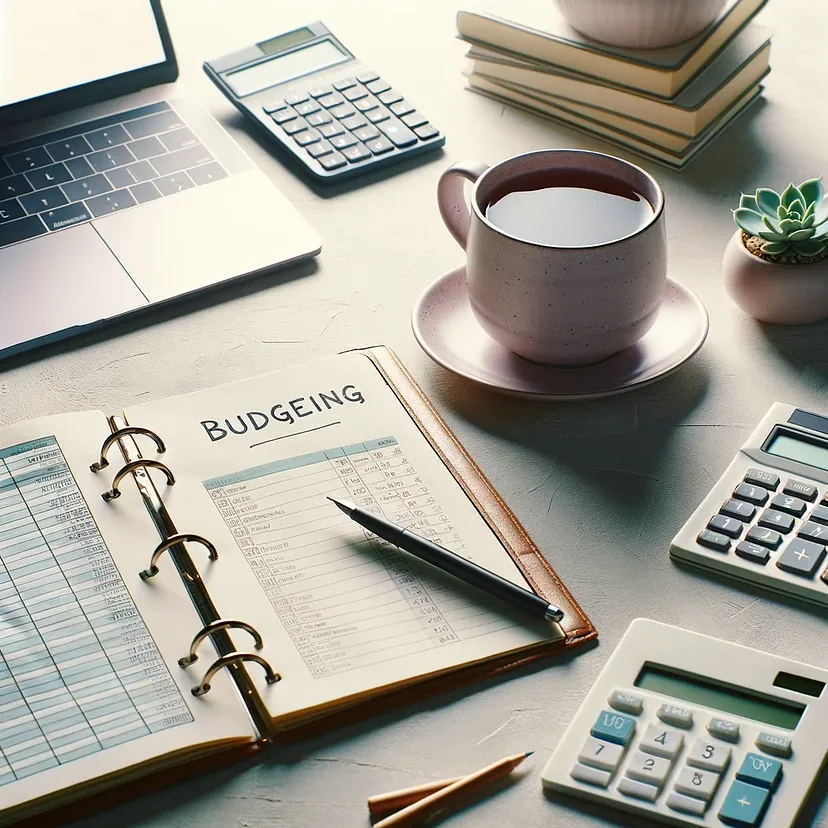Investment and Wealth Building
Is Balancing A Checkbook Still Relevant?

When was the last time you wrote a check? On this digital age of banking, writing checks and balancing a checkbook may seem to be a thing of the past.
You may be surprised, but people do still use checks for things like paying bills and giving to charity. And knowing how you can balance a checkbook is a crucial aspect of keeping track of your financial health.
It’s not only the checks written you would like to keep track of. It’s also every debit and credit transaction.
Even though it might need been more common in your grandparents, looking over your transactions and receipts is as relevant today as in many years past.
What does balancing a checkbook even mean?
Balancing a checkbook is just ensuring all your checking account transactions match as much as the transactions you’ve got recorded in your checkbook. Here’s some background details about this.
The history
Before online banking and having the flexibility to ascertain your account balances on cell phones, having a checkbook register was key in ensuring one didn’t spend an excessive amount of and overdraft their checking accounts.
In spite of everything, check-writing was the way you accessed the cash in your account, and it could take days to ensure that that check to clear.
Balancing a checkbook, also referred to as bank reconciliation, helped checkwriters not only keep track of the checks that were written but in addition gave current details about how much money they’d.
Balancing a checkbook today
Today, balancing your checkbook or reconciling your checking account is used as a option to match your bank statements together with your record of transactions. Additionally it is very helpful for tracking transactions like suggestions or service charges.
Because all it takes is one error, and your receipt now not matches what the debit amount was.
So in easy terms, balancing your checkbook helps you retain a running list of credits and debits. It’s a option to track any money in and money out of your accounts.
It’s also possible to use your records to ascertain against the bank’s records of your transactions. Everyone knows that banks make errors too!
Do you might want to balance a checkbook?
Mobile banking apps and online access make it easy to see transactions quickly. Today we’ve almost quick access to our banking transactions, and debit card buys clear almost immediately.
Nevertheless, it’s vital to reconcile your receipts together with your bank information anyway.
It’s useful in the event you write checks and to maintain a record of your money
For some, we should need to put in writing checks to businesses or corporations that don’t accept card transactions like paying your rent or small businesses.
Keep a record of all your transactions in a checkbook register and even an easy notebook as a transaction log.
As well as, there are occasions when pending transactions can skew the available balance in your checking account.
And since automatic withdrawals and pending transactions can take days to clear, it’s good to pay attention to your account balance.
Advantages of balancing a checkbook often
You need to balance your checkbook fairly often and make it a habit. Here’s why.
Helps you to acknowledge mistakes or financial fraud
Balancing your checkbook or reconciling your records with the bank’s records can allow you to spot any financial fraud. It will possibly even be too easy to trust financial institutions, but banks can make mistakes too.
It happens, and you possibly can find yourself with the improper amount of cash in the event you don’t keep track.
You could find errors in charges
Comparing your transaction log or checkbook register makes it easier to identify errors or incorrect charges by merchants as well. It only takes a slip of a finger to enter the wrong dollar amount and create a math error.
It reminds you of fees and subscriptions
your bank records can be a option to keep track of those forgotten subscriptions or fees.
Perhaps, the monthly fees are easy to recollect, but what in regards to the annual or quarterly payments that you just might need scheduled for automatic withdrawal? If you habitually check your account, you are less more likely to ignore these charges.
It helps you together with your spending habits
You may check your spending habits by balancing a checkbook.
One advantage of keeping a register or transaction log is that noting every withdrawal or debit transaction will make you aware of how often you stop at a coffee shop, eat out for lunch, or also make other impulse purchases. It’s a option to face your money in a brand new way.
Knowing what is happening in your checking account will allow you to feel peaceful and assured about your funds.
Protects you out of your account being overdrawn
If you keep track of each transaction by saving the receipts and writing down all of the money that is available in and all of the money that goes out, it minimizes and even eliminates the possibility your account will likely be overdrawn for non-sufficient funds.
Banks charge fees as high as $38.50 for being overdrawn. Knowing how you can balance a checkbook will allow you to make sure that you may have enough money in your account to cover all your withdrawals and payments.
balance a checkbook step-by-step
First, you wish a option to record the whole lot. You would possibly select an app, spreadsheet, checkbook register, or a notebook and pencil. Whatever you select, make sure that you might be consistent.
When you’ve decided the way you’ll keep track of your transactions the method is similar.
1. Start together with your account balance
Start by entering your current checking account balance. Knowing your current balance provides you with a spot to begin from.
Anytime you employ a debit card, or on those rare occasions, you write a check, be sure you write it down. Include the corporate or store, date, description of the way you used the cash, and the quantity.
The identical goes for any deposits or automatic withdrawals. Every time you add a line item, update the checking account balance.
2. Review your transaction history and compare it to your bank statement
Compare the amounts listed in your personal register or transaction log against the bank statement or transaction history. Note or place a checkmark on all of the checks paid and deposits credited.
It may be helpful to carry on to receipts in the event you can’t enter them right into a checkbook register or transaction log immediately. And in addition in case of your checkbook not balancing. With funds, considering ahead is very important, and that way you possibly can easily look back on the amounts later.
3. Finalize balances and create a routine
Once you’ve got checked that each one the transactions in your checkbook match those within the statement and the checkbook and account balances are the identical, you are all done.
Whether you select to do that weekly or monthly, compare your register to your checking account statements to make certain they balance.
What in case your checkbook doesn’t balance?
If the amounts and balance in your register aren’t the identical as your checking account, you’ll want to double-check every deposit, credit, debit, and withdrawal to verify the amounts are the identical.
Using your bank records, update your check register with any transactions that you just didn’t previously record.
- Are there any bank fees or interest charges you didn’t account for?
- Do the amounts for each transaction match as much as what’s on the receipt?
- Notice any errors?
- Any automatic or scheduled payments you forget to list?
- Is there any interest earned you forgot to list?
If you take the time to match your records against the bank’s records you make sure that that there isn’t anything you don’t recognize. If there may be, contact your bank immediately.
Key reminders for balancing a checkbook
- Save your receipts and confirm the amounts.
- Keep track of upcoming automatic withdrawals and pending transactions.
- Make an observation of each withdrawal and deposit.
- Have access to your most up-to-date checking account statement and bank statements or transactions.
- Have a calculator with you to assist with the numbers.
Balancing a checkbook remains to be relevant today!
Balancing checkbooks might look different than it did 20 years ago.
But balancing your checkbook regularly remains to be vital and relevant.
It’s a option to have peace of mind knowing that your check won’t bounce or your debit card won’t be declined the following time you’re on the checkout line.
Keeping a checkbook register might seem to be a thing of the past, but knowing exactly where your money goes is all the time mandatory. It’s an awesome step to reaching your financial goals.





